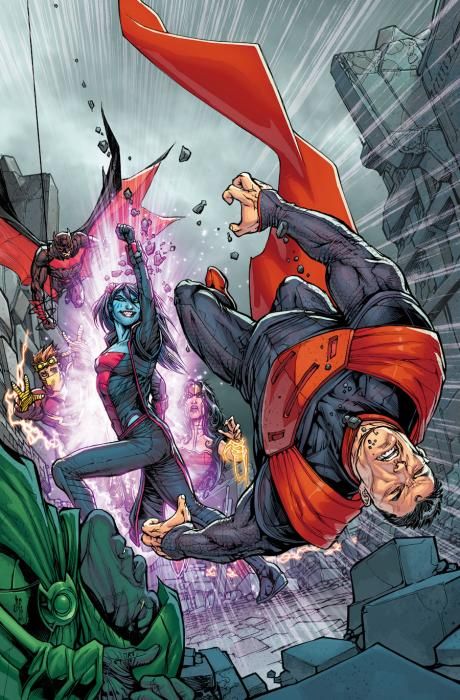"Justice League 3000" #2 is a strange comic, in that it's not entirely clear what the book is aiming for. Keith Giffen, J.M. DeMatteis and Howard Porter's comic is a bizarre mix of banter, bickering and violence, and while the different pieces never quite mesh together, it's actually a little difficult to turn away from.
Giffen is a big fan of the idea of a team that doesn't quite get along; he's tackled that in everything from "Justice League International" to "Legion of Super-Heroes." With that in mind, Giffen and DeMatteis's take on the idea in "Justice League 3000" is definitely one of the more extreme directions that they've taken it in; this isn't a group that bickers, it's one that genuinely doesn't get along at all. In the short term that's not necessarily a problem, since we've certainly all seen the stories where people who start out hating one another gradually come together. The question then becomes, though, that if Giffen and DeMatteis do have that in mind, on what sort of schedule would we see it? The bickering among the different members of the Justice League is more than a bit tiring here; in typical Giffen fashion it loops back around to the same points over and over again, and there's little in the way of humor.
At the same time, though, the new future world that Giffen and DeMatteis have dreamed up is oddly intriguing. The Federation of Planets has been replaced with something called the Commonwealth, although it was taken over ten years ago by the dreaded Five, which the new Justice League was created to try and take out. This version of the 31st century is very different from what we saw in "Legion of Super-Heroes" last year; there are no spaceships now, with everyone using a long-distance teleportation device, and the Five seem to have the entire galaxy on lockdown. (If it wasn't for a mention of Takron-Galtos, I'd start to wonder if this was even supposed to be the same universe as what we've seen before.) I just wish that the characters inhabiting it were more interesting, here. Teri and Terry the Wonder Twins aren't terribly riveting, although they're certainly an improvement over the version of Superman, Batman and Wonder Woman presented here. There's something at least interesting about Green Lantern and Flash, although after this issue it looks like any sort of follow-up on either of them might be a long time coming as they're shifted away from the rest of the narrative for now.
Porter's art at least does some interesting things throughout "Justice League 3000" #2. The usage of Green Lantern's cape (instead of ring) as the projector is fun to look at, certainly. It's a strange take on a familiar power, and that's the sort of thing I'd like to see more of. The new look for the Flash, with wide eyes peeking above a half-mask, also goes a long way towards defining Giffen and DeMatteis's take on the hesitant version of the character. In general, the character designs here are strong, and I like the rough-hewn, strong-jawed style that Porter's using these days. It works well on the different characters, especially their expressions. When Locus is briefly man-handled by Superman, there's something about the look on her face right before she blasts him that has such contempt and anger that it makes the blast that much more satisfying.
"Justice League 3000" is an odd book. It's hard to tell where it's going, and it seems to be trying to juggle too many different styles in its writing. If things settle down and cohere a bit, it's got a chance. But right now, this isn't quite there. There's some flash and bang here, and a cliffhanger that I suspect will keep some readers shocked enough that they'll want to see what happens next. But there's only so many times that particular trick will work, so hopefully everything else will fall into place before long.

